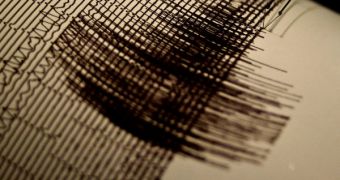Earthquakes usually take only a few seconds to bring down even the most solid buildings, if their epicenter is close enough to the structures. Knowing precisely what is happening in the first seconds when a tremor hits, as far as the structural integrity of the building goes, is therefore a huge goal for engineers and architects. This could help them work together so that, in the future, the number of victims that fall prey to sudden earthquakes is reduced to a minimum.
Testing the effect of earthquakes in real-life situations, such as actually building a several-story construction on a mobile plate, and beginning to shake it, is in most cases a prohibitively expensive endeavor, which cannot be supported by anyone. Such was the case of a collaboration of American and Japanese researchers, from the University of Buffalo and the Kyoto University, which tried out a hybrid approach at studying tremors and buildings.
“One of the key issues in earthquake engineering is how much damage structures can sustain before collapsing so people can safely evacuate. We don't really know the answer because testing buildings to collapse is so difficult. With this hybrid approach, it appears that we have a safe, economic way to test realistic buildings at large scales to collapse,” UB Assistant Professor of Civil, Structural and Environmental Engineering Gilberto Mosqueda, PhD, who has also been the principal investigator of the new experiments, explains.
The team essentially used a combined approach, mixing only certain construction elements from buildings – the ones that previous studies found most prone to collapsing during a tremor – and mathematical models, which the scientists created over the Internet. Some of the weight of the structure itself is also replaced by hydraulic actuators, which means that the strain placed on the shaking device is much smaller. Therefore, a smaller risk of accidents exists in the lab.
“You can't allow a structure to collapse completely on a shake table. You need to have support mechanisms in place, like scaffolds, to catch the falling structure. In this case, we simulated the load with high-performance hydraulic actuators so the specimen overall was actually pretty light. We completely did away with the hazard of having tons of weight overhead that could come crashing down. Here, we just shut off the hydraulics and the load disappeared,” Mosqueda adds.

 14 DAY TRIAL //
14 DAY TRIAL //